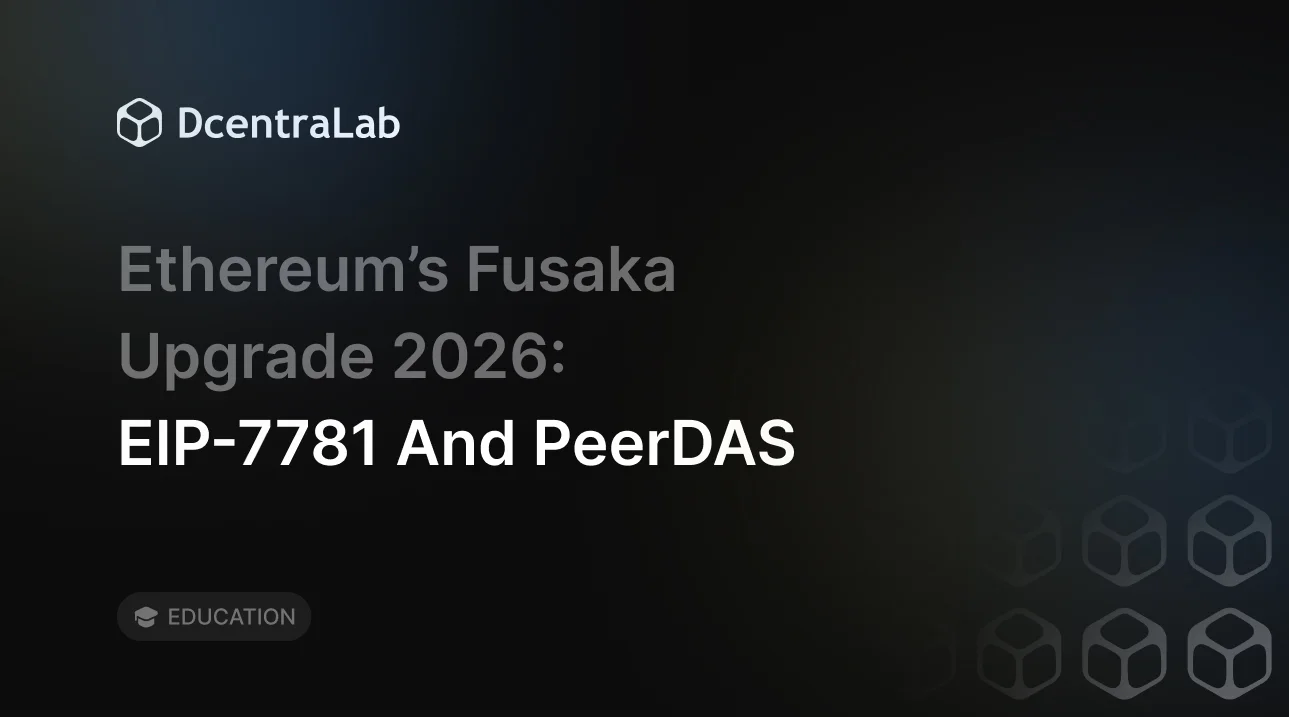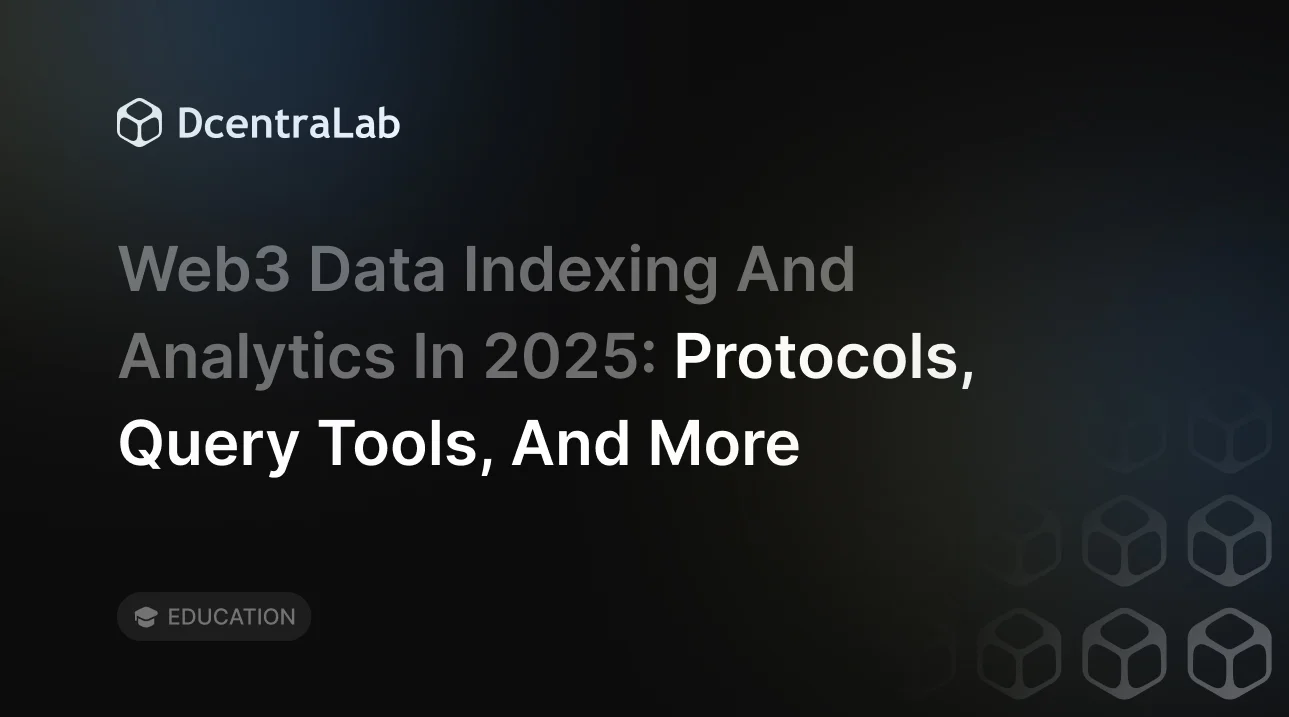Ethereum’s Fusaka Upgrade 2026: EIP-7781 and PeerDAS

tl;dr
- Blockchains upgrade through improvement proposals (EIPs), and Fusaka is Ethereum’s next major hard fork.
- The upgrade introduces faster block times, higher throughput, and major efficiency gains across the network.
- Fusaka improves performance for users, developers, rollups, and validators through cheaper L2 costs, better client efficiency, and lower hardware requirements.
A Brief Introduction to Hard Forks
Blockchains occasionally need upgrades, and those upgrades usually begin as formal improvement proposals, called BIPs for Bitcoin or EIPs for Ethereum. These proposals outline technical changes, fix issues, or introduce new capabilities. They’re publicly reviewed, debated, and refined by developers, researchers, and the wider community. When a proposal requires changes that aren’t backward-compatible, it moves forward as a hard fork, meaning all nodes must upgrade to the new rules to stay on the same chain.
Bitcoin has seen several major hard forks throughout its history, some controversial, such as those related to block size debates. Ethereum, meanwhile, has undergone a long series of coordinated hard forks, each paving the way for major milestones. These included early upgrades like Frontier Thawing and Homestead, followed by Byzantium and Constantinople, and ultimately the famous Merge.
Since the Merge, Ethereum continues to evolve with hard forks such as Shapella and Dencun.
Key EIPs in Fusaka
The Fusaka upgrade introduces a wide range of Ethereum Improvement Proposals (EIPs), each designed to improve scalability, security, and overall network efficiency. At the center of these changes is EIP-7594 (PeerDAS), which brings peer-based data availability sampling to Ethereum. This allows nodes to verify rollup data with far less bandwidth, making higher blob counts per block more practical and pushing the network further into scalable rollup-centric architecture.
Other major upgrades focus on client performance and security. EIP-7642 streamlines node operations by expiring old history and simplifying receipt structures, while EIP-7823, EIP-7883, and EIP-7951 tighten the protocol by limiting input sizes, increasing certain gas costs to prevent abuse, and expanding cryptographic support with secp256r1.
To strengthen execution-layer predictability and stability, Fusaka includes EIP-7825 (capping transaction gas), EIP-7917 (deterministic proposer lookahead), and EIP-7918 (refining blob fee mechanics). Scalability-focused updates such as EIP-7892, EIP-7934, and EIP-7935 introduce new block limits and raise the default gas limit to 60 million, while EIP-7939 adds a useful opcode for bit-level operations.
EIP-7781: Faster Block Times and Shorter Slot Times
EIP-7781 proposes reducing Ethereum’s block time from 12 seconds to 8 seconds, directly increasing Layer 1 throughput by enabling more blocks, and therefore more transactions, per unit of time. The core mechanism is a reduction in slot time, allowing validators to propose and attest to blocks at a faster interval. Shorter slots accelerate the block production cycle, resulting in quicker confirmations and reduced latency for users and applications.
To operate safely under these accelerated timings, EIP-7781 relies on supporting proposals such as EIP-7623 and EIP-7778, which strengthen validator coordination and stabilize consensus under tighter operational windows. These complementary changes ensure that faster block production does not compromise network reliability or decentralization.
The reduced block interval improves scalability by increasing available blockspace, potentially easing congestion and lowering fees during peak demand. Validators must adjust to the faster cadence, but the design preserves security while significantly enhancing transaction speed and network responsiveness.
EIP-7782 & PeerDAS: Boosting Data Availability & Blobs
EIP-7782, known as PeerDAS (Peer Data Availability Sampling), introduces a more efficient system for verifying blob data on Ethereum by dramatically reducing the amount of data each node must download and store. Instead of requiring full blob retrieval, PeerDAS enables nodes to sample small portions of the data and rely on cryptographic guarantees to confirm overall availability, significantly improving scalability for rollup ecosystems.
PeerDAS operates through a peer-to-peer gossip network where blob fragments are distributed, and nodes request targeted samples from multiple peers to ensure redundancy and prevent data withholding. Its column-based sampling method allows nodes to verify cross-sections of all blobs rather than full rows, making reconstruction easier and proof generation more efficient.
By enabling higher blob throughput and lowering hardware requirements for validators and full nodes, EIP-7782 supports a more scalable, decentralized Ethereum. This upgraded data sampling model ensures strong resistance to withholding attacks while providing the performance headroom needed for expanding Layer 2 rollup activity.
Verkle Trees: Stateless Clients and Smaller Node Requirements
Verkle Trees introduce a more advanced cryptographic structure that replaces the Merkle Patricia Trie to significantly reduce Ethereum’s state overhead. By using vector commitments instead of traditional hash-based branching, Verkle Trees allow each node to commit to many children at once, producing much smaller and more efficient proofs. This reduction in proof size is critical for enabling stateless clients, who no longer need to store the full state but can verify required data on demand with minimal bandwidth.
The compact proofs and high-arity branching structure allow nodes, especially light clients and mobile applications, to verify state transitions without maintaining large databases. This shifts Ethereum toward a stateless architecture, lowering storage and CPU requirements for validators and full nodes while preserving security guarantees. As a result, Verkle Trees enhance scalability, reduce hardware barriers, and enable faster, more accessible interactions across the network.
Other Notable EIPs
Beyond PeerDAS, faster block times, and Verkle Trees, several additional EIPs in this upgrade further strengthen Ethereum’s performance and developer experience. EIP-7910 introduces a new eth_config RPC method, giving node operators direct access to fork schedules and configuration details, which simplifies upgrades and network coordination. EIP-7934 adds a strict block-size limit in bytes to prevent performance issues from maliciously bloated transactions.
Security and interoperability also improve through EIP-7951. This EIP adds support for the secp256r1 (P-256) curve, widely used in Web2 systems, making Ethereum more compatible with mainstream hardware wallets and financial platforms. Consensus predictability benefits from EIP-7917, which introduces deterministic proposer lookahead, helping Layer 2 systems achieve near-instant confirmations. EIP-7918 refines blob fee mechanics to keep costs bounded under heavy load, while EIP-7825, EIP-7823, and EIP-7883 strengthen safeguards around gas usage and cryptographic operations.
Finally, EIP-7935 raises the default gas limit to 60 million, and EIP-7642 enables history expiry, both contributing to better scalability and lighter node requirements.
How Fusaka Improves Ethereum’s Scalability and Performance
The Fusaka upgrade delivers major scalability and performance gains for Ethereum by optimizing block production, expanding data capacity, and improving L2 efficiency.
Reducing block times from 15 seconds to roughly 12 seconds increases Layer 1 throughput by around 25%, resulting in faster confirmations and a smoother user experience. This is especially valuable for DeFi applications, where speed is essential and delays can lead to financial loss or missed opportunities.
Fusaka also doubles the blob capacity per block, enabling L2 rollups to batch significantly more transactions at far lower costs. Combined with PeerDAS, which improves data availability, L2 settlement becomes cheaper and more scalable, accelerating Ethereum’s transition into a rollup-centric ecosystem.
Fusaka establishes the foundation for future L2 improvements that could push Ethereum toward 100,000+ TPS, all while preserving decentralization and long-term network resilience.
Fusaka’s Benefits for Different Ethereum Users in 2026
From everyday traders to developers, node operators, and large-scale Layer 2 systems, the Ethereum Fusaka upgrade brings meaningful benefits to every type of user in 2026.
For DeFi Traders and Everyday Users
Fusaka accelerates the network by shortening block times and raising gas limits, leading to faster and cheaper transactions across both Layer 1 and Layer 2. This means smoother swaps, quicker confirmations, and fewer surprise gas spikes during peak activity. The upgrade also strengthens Ethereum’s resilience, reducing the likelihood of congestion or network instability during high-volatility moments. Overall, everyday usage becomes noticeably more reliable and user-friendly.
For Layer 2 Rollups and Developers
With expanded blob capacity and PeerDAS, settling L2 data on Ethereum becomes dramatically cheaper and more efficient. Rollups can process far more transactions while keeping fees low, enabling true mass-scale applications. Developers also gain access to improved tools and opcodes that streamline cryptographic operations and advanced smart-contract logic. These enhancements support the next wave of high-performance DeFi, gaming, and social dApps while giving builders more flexibility and lower operating costs.
For Node Operators and Validators
Fusaka reduces hardware requirements through Verkle Trees and PeerDAS, allowing more people to run nodes without specialized machines. Node management also becomes simpler thanks to improved configuration and state-handling features. Validators benefit from greater predictability and stability, ensuring smooth block production even as network activity grows.



